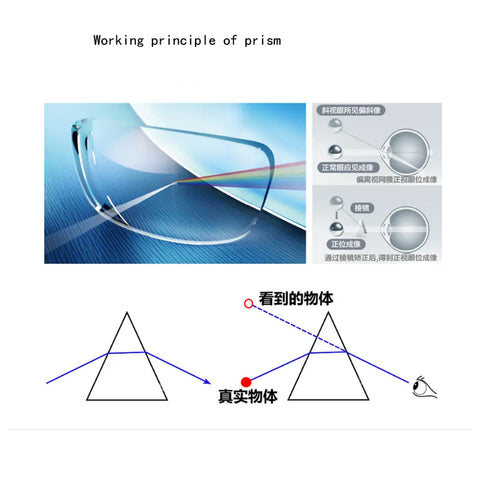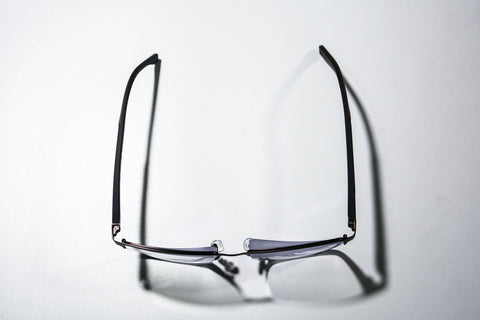In addition to spherical and cylindrical glasses, do you know there are prisms?
When most people wear glasses, they are basically exposed to spherical mirrors (myopia or hyperopia) and cylindrical mirrors (astigmatism). In addition to spherical mirrors and cylindrical mirrors, we also have a prism fitting screening.

This is a picture of glasses with prism installed on the left lens. This lens is used for patients with diplopia. When two eyes are not aligned to see the same point, diplopia may occur (see double). The prism can be used to bend the optical path, so that the image can be refocused on the retina that deviates from the eye, thus restoring binocular vision.

So who needs prism correction for glasses? I have summarized the following situations that need prism intervention.
First, if the fusion vision is abnormal at the same time and affects stereopsis, and the stereopsis is significantly improved after prism correction, prism can be added.
The second is that it affects the vision. After the prism correction, the vision is significantly improved, and the vision is clearer. A prism can be added. For example, some people have good eyesight in one eye, but they can't see clearly when they see with two eyes.
The third is abnormal visual function, which mainly refers to esotropia. Adults have: headache or migraine, photophobia, sore eyes and tears, long time watching TV, computer, driving or reading, easy to appear visual fatigue and other symptoms. Children and teenagers will have some abnormal behaviors, such as inability to write in line, continuous reading difficulty, frequent missing words when writing or reading, inability to concentrate, and suspected hyperactivity disorder. Prism can be added if you feel relaxed and comfortable after prism correction.

This is a picture of glasses with prism installed on the left lens. This lens is used for patients with diplopia. When two eyes are not aligned to see the same point, diplopia may occur (see double). The prism can be used to bend the optical path, so that the image can be refocused on the retina that deviates from the eye, thus restoring binocular vision.

So who needs prism correction for glasses? I have summarized the following situations that need prism intervention.
First, if the fusion vision is abnormal at the same time and affects stereopsis, and the stereopsis is significantly improved after prism correction, prism can be added.
The second is that it affects the vision. After the prism correction, the vision is significantly improved, and the vision is clearer. A prism can be added. For example, some people have good eyesight in one eye, but they can't see clearly when they see with two eyes.
The third is abnormal visual function, which mainly refers to esotropia. Adults have: headache or migraine, photophobia, sore eyes and tears, long time watching TV, computer, driving or reading, easy to appear visual fatigue and other symptoms. Children and teenagers will have some abnormal behaviors, such as inability to write in line, continuous reading difficulty, frequent missing words when writing or reading, inability to concentrate, and suspected hyperactivity disorder. Prism can be added if you feel relaxed and comfortable after prism correction.